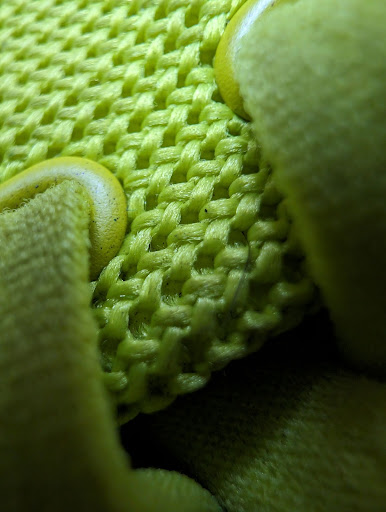Pixel 8 Pro Camera: Super Capable Camera With One Imperfection
The announcement of the Pixel 8 smartphone line announcement from Google came with very little fanfare because everything (of importance) to know about the phone had previously been "leaked." So, launch day didn't come with a ton of excitement, but delivery day is another story. Reviewers and consumers alike were clamoring to get their hands on the new Pixel 8 and Pixel 8 Pro smartphone for all of the goodness wrapped into Android 14, but most importantly, the new camera software.
Stop it with the "megapixels."
Yes, the Pixel 8 smartphone comes with a new "camera," but what really makes the camera shine (or not) when it comes to the Pixel or most smartphones, is the software. Computational photography was really good years ago with the OG Pixel launch. Now, we're up to the eight models of phones with new and improved software for an even better experience with computational photography. With that said, can we please stop with the "megapixel" hype? As someone shooting with an actual camera body on a regular basis, I'll tell you that not all megapixels are created equal. I won't bore you with all the details, but in short, the image sensor in a smartphone is not going to be able to handle the photons of light the same way a camera with a Micro 4/3, APS-C, or full-frame sensor. And the highly touted megapixels are not going to stack up evenly in battle versus a camera body that's rated with fewer megapixels. A more in-depth look at this can be found here on Hands-On Photography.
At any rate, Google announced a 50 "megapixel" camera on the Pixel 8 Pro, meaning you'll be able to capture high-resolution images with great detail and color. And to Google's credit, this is fairly true. I have some examples that really got my attention in my less-than-scientific testing.
Super sharp images
I snapped a few photos with the device over the weekend and really enjoyed how nice the images looked on the Actua screen of the Pixel 8 Pro. The images are quite sharp for a smartphone with an image sensor less than 1 inch in size. Here's a photo of one of my dogs, Biscuit, as he's sitting next to me on the floor. I wanted to snap a photo of his face for a simple portrait. I noticed the Pixel camera software switched to the macro lens in the interface. This was perfectly fine as it allowed me to get closer to Biscuit and capture more detail in each lil' whisker and fur on his chunky head. The images looked GREAT on my phone. Unfortunately, I pulled the images up on my computer because. . that's what I do. In doing so, I found that the images could be a bit too sharp. Is this because the lens on the Pixel 8 Pro is top-quality glass? Rhetorical question. Heck, NO. This is all algorithm magic happening to process images for us as we capture them. Sometimes, it gets it right, and sometimes, it doesn't.

Image credit: Ant Pruitt. All rights reserved
If you look at the fur near his eye that's in the light, there's a halo around each bit of fur as the algorithm decided to over-sharpen the hairs. But if you look at this image on your phone, you'll never notice these artifacts. The images will look GREAT.
This also led me to believe that it was all due to a potential algorithm Google has in place specifically for macro photography. So, I shot another test image. Here, you'll see the beloved Atoms shoes of Queen Pruitt. The shoes are a bit of a mesh design. The mesh and shoelaces are visible in the image in nice detail.

Image credit: Ant Pruitt. All rights reserved
It's not over-sharp. The color was a bit off due to the white balance, so I corrected the white balance in post-processing to reveal the actual green hue of the shoe. But again, the detail of the mesh is spectacular for a macro shot. I even cropped in tighter in post to take a look.

Image credit: Ant Pruitt. All rights reserved
Yes, that's specks of dirt and rubber from a recent walk on the local football field turf. Granted, some of the sharpness is lost when cropping in this tight, but it's not too bad.
On the last phone TWiT purchased for me, the Pixel 6 Pro, I enjoyed how well macro photography worked. Granted, I had more tools in place to aid in the shot, and it definitely showed. The same can be said for the Pixel 8 Pro. You're going to get some really nice photos out of this camera. Just make sure you're holding it steady when you frame the shot, and the computational photography will handle the rest.
Pro-mode, not so pro
Unfortunately, I can't say much for the pro mode of the software. Sure, it's nice that you're actually given tools to manage the exposure triangle (shutter speed and ISO), but it's not a professional experience. If you're going to use the pro tools, be sure you're not in a hurry to capture the photo. Accessing the shutter speed and ISO isn't as simple as it would be on a camera body. And in some instances, the shutter speed doesn't really seem to feel accurate. Shooting 1/125 of a second shutter speed feels a touch slower than advertised. Another pain point is the general speed of the camera when in 50-megapixel capture mode. If you tap the shutter, there's a pause of over half a second afterward. This is not good for fast-moving objects in the shot or if you have a less-than-steady hand. Performance is much better in the "normal" mode, but you lose out on the extra pixel detail.
Update to Google Photos app
The Google Photos app got another boost in performance as the Tensor SOC utilizes AI to help edit photos. Being able to remove objects from an image is a pretty nifty idea. This works well in the Google Photos app for obvious situations, such as removing a cup from a table or any object that has plenty of open space around it. I decided to challenge it with my photo of Biscuit. If you look closely, on the lower left of the frame, my shoes are visible. I love my shoes, but they do NOT help the image. So, I wanted to remove my shoes from the image. My natural reflex was to pull the image into Photoshop. Photoshop on the web did a nice job removing my shoes, as seen here. Google Photos? Meh, not so much.

This AI can get better over time, I'm sure. It's an okay start for now. Maybe we'll see improvement in the next version.
In conclusion, the Pixel 8 Pro camera is quite nice. It's not perfect, but it's quite nice for what most people will use it for. Looking for the perfect vacation camera? This phone qualifies. Need a nice macro photography camera? This phone definitely works for that. And because it's software-based, it can get better.